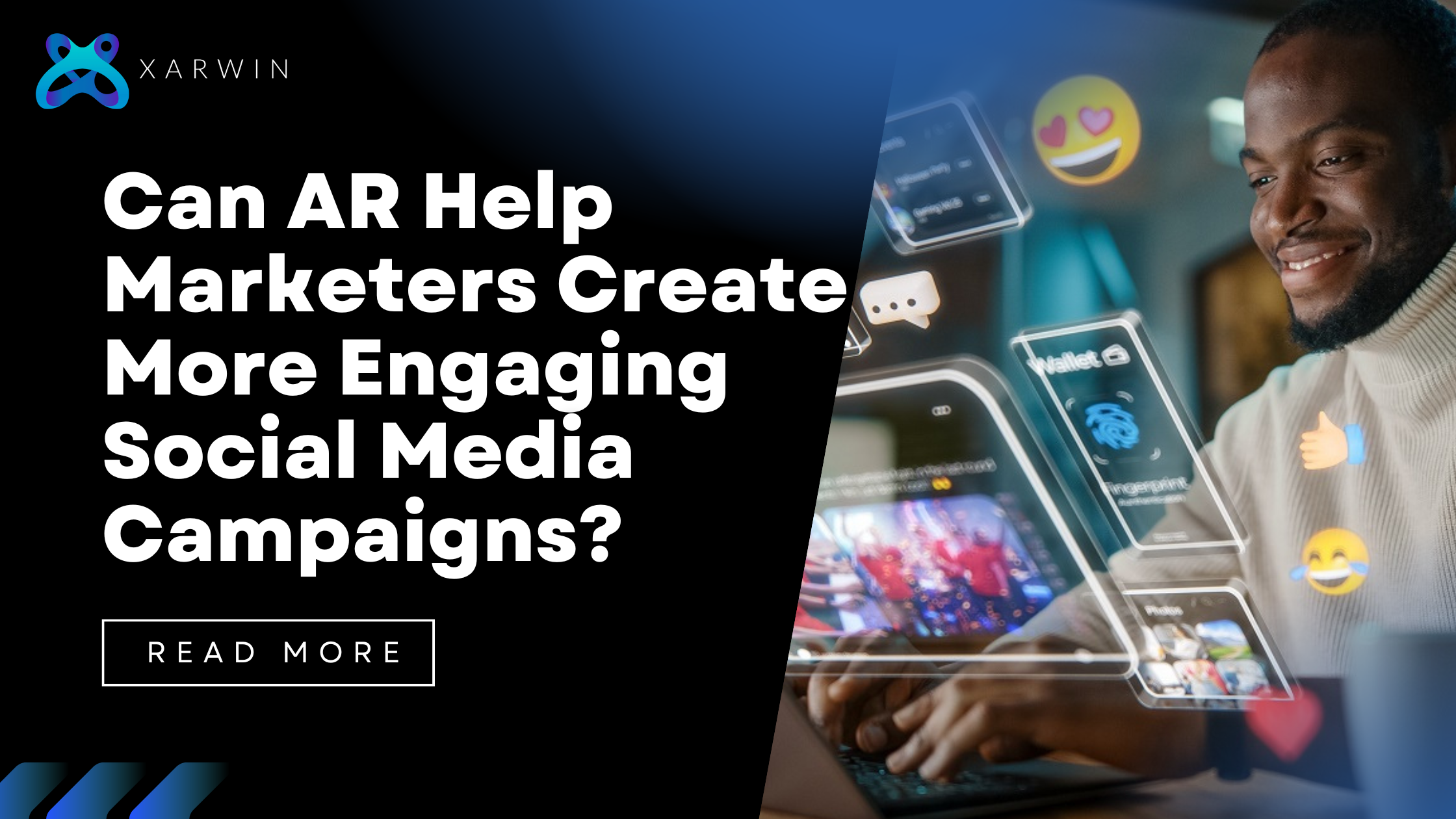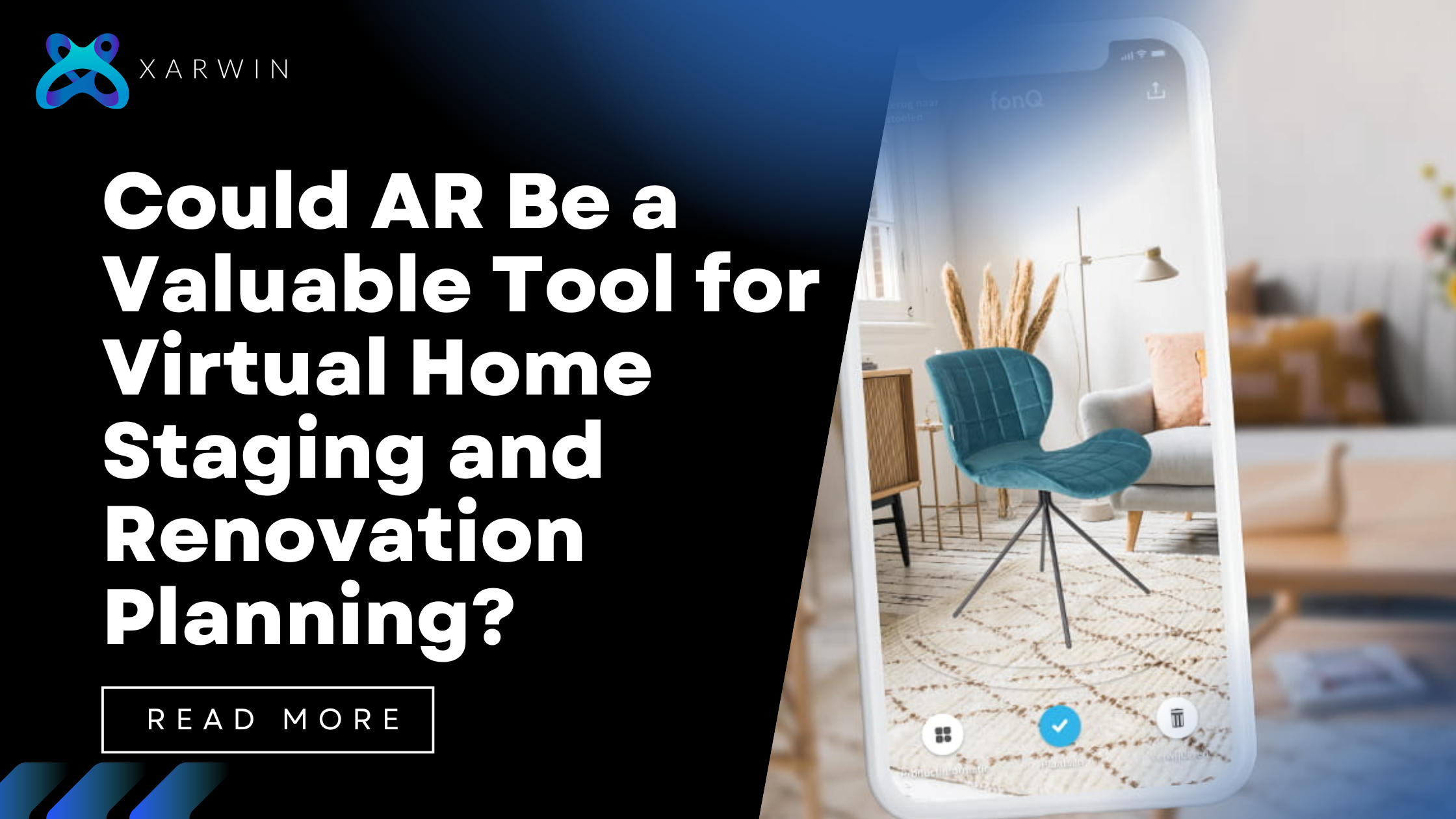As I put on the sleek AR glasses, I am transported to a world where the line between reality and imagination blurs. The streets are alive with digital information, and my senses are heightened as I navigate through this new world. Augmented Reality (AR) is changing the game, and the possibilities are endless.
In this blog post, we will explore the scope of AR both in the present and in the future. Join us on this journey as we dive into the exciting world of AR and discover its potential to transform the way we interact with the world around us.
What is Augmented Reality?
Augmented Reality is a technology that overlays digital information, such as images, sounds, and text, onto the real world. It enhances the user’s perception of reality by providing an interactive experience that blends the physical and digital worlds. AR is achieved through a combination of hardware, software, and sensory devices.
Key components involved in AR
Augmented Reality involves various components and technologies that work together to create an immersive experience for users. These include:
- Cameras: To capture real-world images and video
- Sensors: To track the user’s location and movements
- Displays: To overlay digital information onto the real world
- Processors: To process and analyze data in real-time
- Software: To create and control AR applications and experiences
The Past of Augmented Reality
Augmented Reality has come a long way since its inception. AR has its roots in the military, where it was first used for training purposes.
However, it was not until the late 1990s that the technology made its way to the commercial world. Since then, AR has been used in various industries, including gaming, education, healthcare, retail, and more.
Historical overview
- 1968: Ivan Sutherland developed the first head-mounted display (HMD)
- 1975: Myron Krueger created the first AR experience called “Videoplace”
- 1992: Louis Rosenberg developed the first AR system called “Virtual Fixtures”
- The late 1990s: AR technology began to emerge in commercial applications
- 2016: Pokémon Go became a global phenomenon and popularized AR gaming
Applications of AR in various industries
Augmented Reality (AR) is a technology that blurs the line between reality and imagination, creating a world where digital information overlays the physical world.
With the advancement of technology, AR has become more sophisticated and is now being used in various industries, including gaming, education, healthcare, and retail.
- Gaming: AR is being used to create immersive experiences that blur the line between reality and fantasy. Examples include Pokémon Go, Minecraft Earth, and Harry Potter: Wizards Unite.
- Education: AR is being used to create interactive learning experiences that make learning more engaging and fun. Examples include Anatomy 4D, The Elements, and AR Flashcards.
- Healthcare: AR is being used to create simulations that help doctors and surgeons practice complex procedures. Examples include AccuVein, Proximie, and HoloAnatomy.
- Retail: AR is being used to enhance the shopping experience by allowing customers to view products in 3D and try them on virtually. Examples include IKEA Place, Sephora Virtual Artist, and Converse AR.
The Scope of Augmented Reality in 2023
The current state of AR is indeed an exciting one. With advancements in technology and innovation, the potential for AR is huge. The future of AR is even more promising, as experts predict that by 2023, the global AR market is expected to reach a staggering $70 billion. This is due to the compound annual growth rate of 55.8% that AR has been experiencing over the years.
AR is not only limited to the gaming industry but has found its way into various industries, including healthcare and retail, where it has been used to enhance the user experience and revolutionize the way we interact with products and services. The Asia-Pacific region is expected to be the largest market for AR technology
Emerging trends and predictions
- Communication: AR can be used to create virtual meetings that feel like real-life interactions. This can enhance remote work and collaboration.
- Entertainment: AR can be used to create new forms of interactive media, such as AR movies and TV shows. This can provide a more immersive and engaging experience for viewers.
- Manufacturing: AR can be used to create smart factories that optimize production processes. This can increase efficiency and reduce costs.
- ● Real Estate: AR can be used to provide virtual tours of properties, allowing potential buyers to view properties without physically visiting them.
- Travel: AR can be used to enhance the travel experience by providing information and guidance in real-time.
- Sports: AR can be used to enhance the viewing experience of sports events by providing real-time statistics and information.
Top Companies Utilizing AR
Leading companies are making significant progress in the integration of Augmented Reality (AR) technology into their products or services. In fact, many of the world’s most successful companies, such as Apple, Google, Facebook, and Microsoft, have recognized the importance of this technology and are investing heavily in its development.
AR has the potential to transform the way we interact with the world around us, and these companies are at the forefront of this exciting trend. By integrating AR into their products, these companies are not only enhancing the user experience but also paving the way for a new era of innovation and growth. With AR, the possibilities are endless, and we can expect to see even more exciting developments from these companies in the years to come.
Overview of leading companies
- Apple: ARKit is a software development kit that allows developers to create AR applications for Apple devices. Apple is also rumored to be developing AR glasses.
- Google: ARCore is a platform for building AR experiences on Android devices. Google is also developing Google Glass Enterprise Edition 2 for enterprise use.
- Facebook: Oculus is a VR headset that can also be used for AR experiences. Facebook is also developing AR glasses.
- Microsoft: HoloLens is a mixed-reality headset that allows users to interact with digital objects in the real world. Microsoft is also developing Windows Mixed Reality for use in various industries.
Innovations, and success stories
- Apple: Pokémon Go was a massive success and brought AR gaming into the mainstream. Apple is also working on ARKit 5, which will improve object detection and tracking. In addition, Apple is investing in AR technology for its upcoming products, including its rumored AR headset.
- Google: Google Maps uses AR to provide walking directions. Google is also working on Project Starline, which uses AR to create realistic 3D video chats. Furthermore, Google is exploring the use of AR in other applications, such as virtual try-on for shopping and interior design.
- Facebook: Facebook is working on Project Aria, which is a research project that aims to create a wearable AR device. Facebook is also collaborating with developers to create AR effects for its social media platforms, such as Instagram and Messenger. In addition, Facebook is exploring the use of AR for remote work and virtual events.
- Microsoft: HoloLens is being used by various industries, including education, healthcare, and manufacturing. Microsoft is also working on Mesh, a mixed-reality platform for collaboration. In addition, Microsoft is investing in AI-powered AR technology for its products, such as its Dynamics 365 Remote Assist tool for remote assistance and training.
Final Thoughts
AR is a technology that is transforming the way we interact with the world. It has the potential to create new forms of entertainment, education, and communication. As businesses continue to integrate AR into their strategies, the impact of AR will only continue to grow. The future of AR is exciting, and we are only scratching the surface of what this technology can do. The possibilities are endless, and we are excited to see where AR takes us in the coming years.
As a trailblazer in augmented reality (AR), Xarwin combines innovation with a user-centric approach to redefine industry standards. Its team of expert engineers, designers, and strategists excels in crafting immersive AR experiences across various sectors. With each project, the company not only meets current demands but also shapes future trends, establishing itself as a leading force in the AR landscape.





